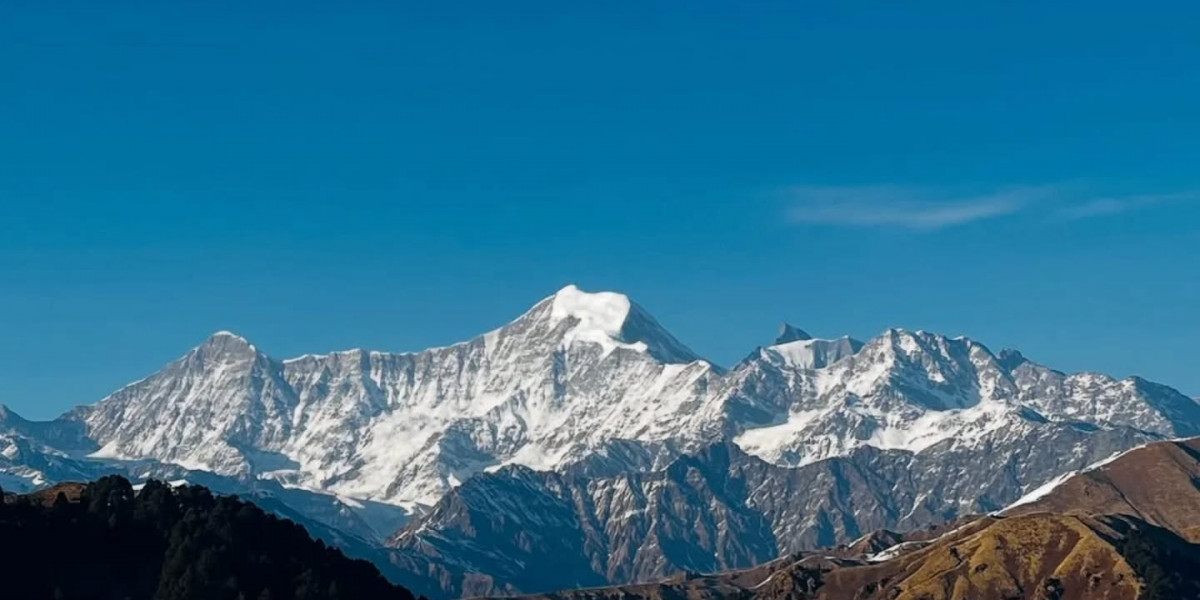If you’re based in Dehradun and craving a quick Himalayan fix, the Nag Tibba Trek from Dehradun is your best bet. Friendly, accessible, and incredibly rewarding, this little mountain packs panoramic views, crisp air, and a summit sunrise that feels like a private show. Ready to learn how to plan it, what to pack, and why it’s ideal for first-timers? Let’s jump in.
Quick Snapshot (At a Glance)
Start/End: Dehradun (drive to trailhead)
Duration: 2–3 days (popular weekend option)
Max Altitude: ~3,022 m (Nag Tibba summit)
Difficulty: Easy–Moderate (suitable for beginners with basic fitness)
Best Time: Oct–Dec and Mar–May (clear views; avoid heavy monsoon)
Why Nag Tibba is Perfect for First-Time Trekkers
Nag Tibba gives you the “real Himalaya” experience without committing to long approaches or extreme altitudes. Trails are well-defined, local communities are welcoming, and the climb rewards you fast — making it ideal to test your legs, gear, and appetite for mountain mornings.
Accessibility: Getting There from Dehradun
Dehradun is the nearest major city. You’ll typically drive 2.5–3 hours to the trailhead (Sitoli or Kandi) via motorable roads. Private taxis, rental cars, or operator pickups are common — many groups leave Dehradun on the first morning or the previous evening.
Best Time to Go
Aim for autumn (October–November) and spring (March–May) for stable skies and wildflower displays. Winters are cold and can bring snow — it's beautiful but requires warmer gear. Monsoon (June–September) brings slippery trails and poor visibility, so it’s less recommended.
Trail Overview & Difficulty
The trail is a mix of dirt tracks, forested climbs, and open ridgelines. It’s steep in sections but short overall. Expect 4–6 hours of trekking for the ascent depending on fitness and stops.
Day-by-day Itinerary (2–3 days)
Day 1: Dehradun → Trailhead → Camp/Homestay
Reach the trailhead by afternoon, short hike to the campsite/homestay, evening acclimatization and dinner.Day 2: Summit Push & Return to Camp
Early start (pre-dawn) to reach the summit for sunrise, soak in views, descend back to camp, then drive to Dehradun.Day 3 (Optional): Leisure return via villages
Use this extra day if you want a relaxed pace, village walks, or to recover.
What You’ll See: Scenery & Highlights
Expect sweeping views of the Greater Himalaya — peaks like Bandarpoonch and Gangotri ranges peek on the horizon. The ridgeline at sunrise is spectacular: pink light, shadowed valleys, and a feeling that you’ve stepped into a painting.
Flora, Fauna, and Local Villages
Nag Tibba sits amid oak and rhododendron forests. Birdlife is abundant; local shepherds and small hamlets add cultural texture to the trek.
Gear & Packing List (Essentials + Nice-to-haves)
Essentials: Lightweight backpack, trekking shoes, warm layers, rain jacket, headlamp, water bottle, basic first-aid.
Nice-to-haves: Trekking poles, camera, portable charger, lightweight sleeping bag (if camping).
Clothing and Footwear
Layering is key — base layer, insulating mid-layer, and a windproof shell. Sturdy, broken-in trekking shoes will make the steep sections comfortable.
Camping and Overnight Gear (if applicable)
If you opt to camp, confirm tents and sleeping bags are included with your operator; otherwise pack a 3-season sleeping bag.
Fitness & Preparation Tips
You don’t need to be an athlete, but training helps. Try 4–6 weeks of brisk walking, hill climbs, and stair sessions. Short practice hikes with a loaded pack will boost confidence.
Simple Training Plan Before the Trek
3 sessions/week: one long walk (90+ minutes), one stair/hill session, one cross-training day (cycling or strength).
Safety, Permits & Local Rules
Nag Tibba doesn’t usually require formal permits for casual trekkers, but rules change — check with local authorities or your operator. Carry ID, respect villages, and follow Leave No Trace principles.
Weather Considerations and Altitude
Nag Tibba’s altitude is moderate, but nights get cold. Keep an eye on weather forecasts the day before and pack extra layers.
Food, Water & Accommodation Options
Simple home-cooked meals, energy-rich snacks, and filtered water are standard. Homestays offer cultural immersion; operators often provide meals for group treks.
Cost Estimate & Booking Tips
A basic 2-day guided trek from Dehradun (including transport, guide, and basic meals) is affordable — ideal for budget travelers. Book with a reputable local operator for safety and convenience.
Why Book with a Local Operator? (Benefits)
Local operators handle permits, transport, meals, and emergency support. They also know the trails, weather windows, and the best summit timings for sunrise.
Check out other Winter Treks from Himalaya Tribe:
Conclusion
The Nag Tibba Trek from Dehradun is a short, sweet Himalayan adventure that fits perfectly into a weekend. It teaches you how to trek, rewards you with spectacular summit views, and connects you with local mountain life. Whether you’re testing gear, training for longer treks, or simply chasing a sunrise, Nag Tibba is a friendly starter that leaves you wanting more.
Short Brief — Himalaya Tribe (About the Company)
Himalaya Tribe is a trusted local trekking operator offering curated experiences like the Nag Tibba Trek, Valley of Flowers Trek, and many more. As the Best trekking company in Uttarakhand and a recognized Best trekking tour operator Dehradun, Himalaya Tribe focuses on safety, local guides, and authentic mountain experiences. If you want a smooth, well-supported trek with knowledgeable staff, Himalaya Tribe’s packages are designed to deliver memorable Himalayan adventures.
FAQs
Q1: How fit do I need to be for Nag Tibba?
A: Moderate fitness is enough. Regular walking, stair climbing, and a couple of weekend hikes will prepare you well.
Q2: Can I do Nag Tibba in winter?
A: Yes — but expect snow, cold nights, and the need for warmer gear and possibly crampons. Go with an experienced operator.
Q3: Are guides necessary?
A: Not strictly, but guides add safety, local knowledge, and logistical ease — recommended for first-timers.
Q4: Is camping available on the trek?
A: Yes, many operators offer both camping and homestay options depending on your preference.
Q5: What should I pack for a two-day Nag Tibba trek?
A: Pack layers, waterproof jacket, trekking shoes, water bottle, snacks, headlamp, and a small first-aid kit.








